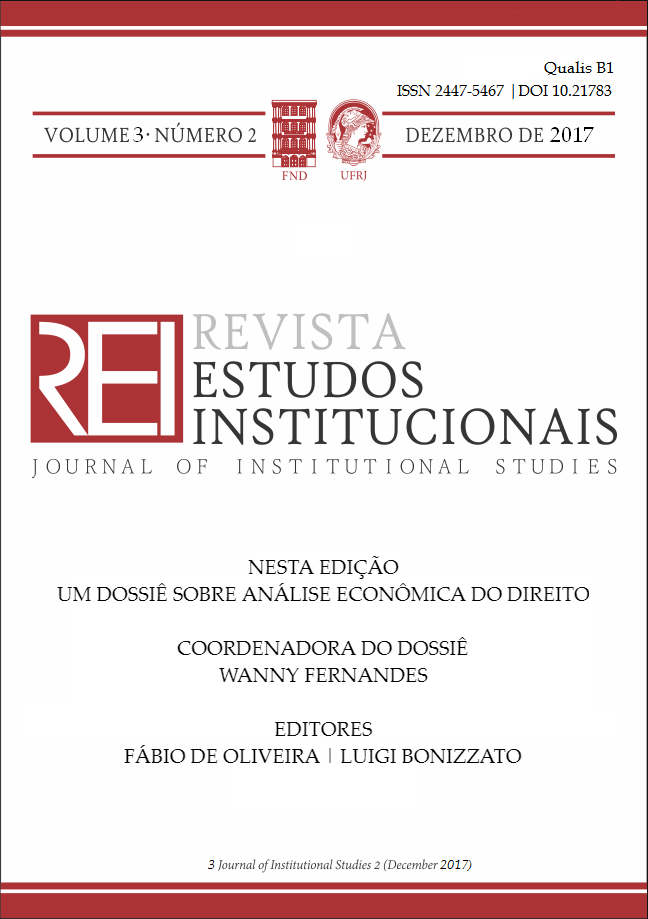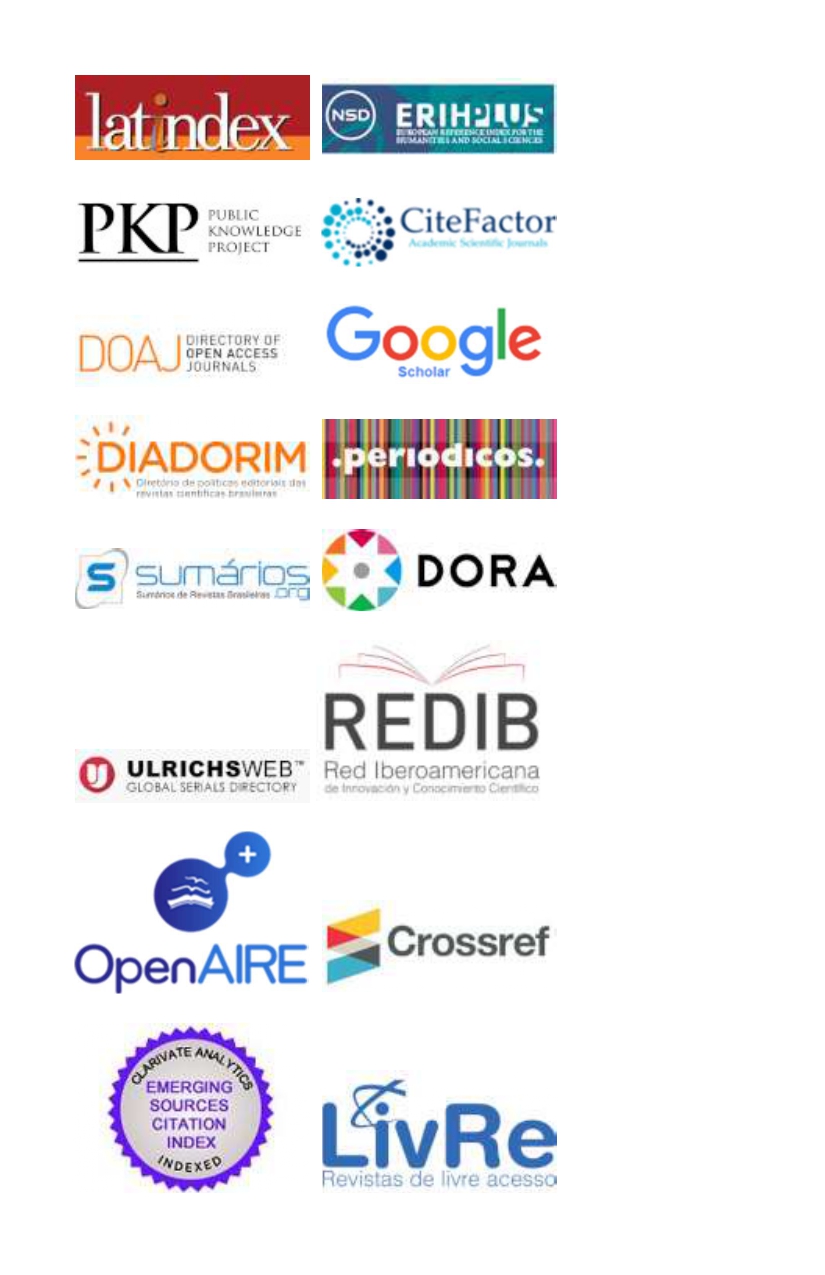CHANGING INSTITUTIONAL ARRANGEMENTS OF INTERNATIONAL INVESTMENT DISPUTE RESOLUTION IN A GLOBAL ORDER: THREE DIFFERENT APPROACHES
DOI:
https://doi.org/10.21783/rei.v3i2.86Palavras-chave:
International Investment Dispute Settlement, Bilateral Investment Treaties, Institutional ArrangementsResumo
This article explores three different approaches in changing the international investment dispute resolution institutional arrangement models. To do this, it first analyses the hegemonic Bilateral Investment Treaties’ system of investor-State arbitration. Then the article focus on critics related to the procedure, regarding jurisdictional issues. Thirdly, it presents three different approaches to change institutional arrangements in the investment dispute resolution system, as the European, the U.S. and the Brazilian approaches.
Downloads
Referências
Brewer, Thomas L. (1994). International Investment Dispute Settlement Procedures: The Evolving Regime for Foreign Direct Investment. 26 Law & Pol'y Int'l Bus. 633 (1994-1995).
Brower, Charles N. and Schill, Stephan W. (2009) "Is Arbitration a Threat or a Boon to the Legitimacy of International Investment Law?," Chicago Journal of International Law: Vol. 9: No. 2, Article 5. Available at: http://chicagounbound.uchicago.edu/cjil/vol9/iss2/5.
Cheng, Tai-Heng. (2007). Precedent and Control in Investment Treaty Arbitration. Fordham International Law Journal, Vol. 30. Available at SSRN: http://ssrn.com/abstract=959382.
Choi, Won-Mog. (2007) The Present and Future of The Investor-State Dispute Settlement Paradigm. J Int Economic Law 10 (3): 725-747. doi: 10.1093/jiel/jgm024.
Choudhury, Barnali (2016) 2015: The Year of Reorienting International Investment Law, ASIL Insights (Feb. 5, 2016), https://www.asil.org/insights/volume/20/issue/3/2015-year-reorienting-international-investment-law. Acessed on 20/10/2016.
Chung, Olivia (2006). The Lopsided International Investment Law Regime and Its Effect on the Future of Investor-State Arbitration. 47 Va. J. Int'l L. 953.
Dolzer, R. & Schreuer, C. (2008) Principles of international investment law. Oxford University Press, New York.
Dupont, C. G. and Schultz, T. (2016). Towards a New Heuristic Model: Investment Arbitration as a Political System. Journal of International Dispute Settlement, vol. 7.
European Commission (2015). Inside TTIP: An overview and chapter-by-chapter guide in plain English. http://trade.ec.europa.eu/doclib/docs/2015/july/tradoc_153635.pdf. Accessed on 10/10/2016.
Franck, Susan D. (2005) The Legitimacy Crisis in Investment Treaty Arbitration: Privatizing Public International Law Through Inconsistent Decisions. Fordham Law Review, Vol. 73, p. 1521. Available at SSRN: http://ssrn.com/abstract=812964.
Gantz, David A. (2006). An Appellate Mechanism for Review of Arbitral Decisions in Investor-State Disputes: Prospects and Challenges. 39 Vand. J. Transnat'l L. 39.
Gerstetter, Christiane and Meyer-Ohlendorf, Nils, Investor-State Dispute Settlement Under TTIP – A Risk for Environmental Regulation? (December 31, 2013). Heinrich Böll Stiftung TTIP Series, December 2013. Available at SSRN: http://ssrn.com/abstract=2416450.
Ikenson, Daniel J., A Compromise to Advance the Trade Agenda: Purge Negotiations of Investor-State Dispute Settlement (March 4, 2014). Cato Institute Free Trade Bulletin, No. 57, March 2014. Available at SSRN: http://ssrn.com/abstract=2501058.
Kalicki, Jean E. & Joubin-Bret, Anna (Editors), (2015). Reshaping the Investor-State Dispute Settlement System. Journeys for the 21st Century. Nijhoff International Investment Law Series.
Krajewski, Markus, Modalities for Investment Protection and Investor-State Dispute Settlement (ISDS) in TTIP from a Trade Union Perspective (July 1, 2014). Available at SSRN: http://ssrn.com/abstract=2519995 or http://dx.doi.org/10.2139/ssrn.2519995 .
Lowenfeld, Andreas (2008). International Economic Law, 2nd ed., Oxford University Press.
Monebhurrun, Nitish (2016). Novelty in International Investment Law: The Brazilian Agreement on Cooperation and Facilitation of Investments as a Different International Investment Agreement Model. J Int. Disp. Settlement, v. 0, 1–22.
Newcombe, Andrew. (2005) The Boundaries of Regulatory Expropriation in International Law. 20:1 ICSID Review – FILJ. Available at SSRN: http://ssrn.com/abstract=703244.
Newcombe, Andrew. (2005) The Boundaries of Regulatory Expropriation in International Law. 20:1 ICSID Review – FILJ. Available at SSRN: http://ssrn.com/abstract=703244.
Poulton, Edward and Allen, Richard. (2016) Smoke and Mirrors? Structuring of Foreign Investments Following the Philip Morris Award. Available http://globalarbitrationnews.com/smoke-mirrors-structuring-foreign-investments-following-philip-morris-award-20160608/. Access on 18 June 2016.
Salacuse, Jeswald W. (2007) Is There a Better Way - Alternative Methods of Treaty-Based, Investor-State Dispute Resolution. 31 Fordham Int'l L.J. 138.
Salasky, Julia & Montineri, Corinne (2013). UNCITRAL Rules on Transparency in Treaty-Based Investor-State Arbitration. 31 ASA bulletin 4/2013 (December).
Schreuer, Christoph (2013). Investment, International Protection, in Max Planck Encyclopedia of Public International Law.
Shihata, Ibrahim F.I. (1986). "The Settlement of Disputes Regarding Foreign Investment: The Role of the World Bank, with Particular Reference to ICSID and MIGA." American University International Law Review 1, no. 1: 97-116.
Sornarajah, M. (2006). Power and justice: third world resistance in international law. 10 S.Y.B.I.L. 19.
Sornarajah, M. (2010). The international law on foreign investment. Third edition. Cambridge University Press.
Sornarajah, M. (2011). Mutations of Neo-Liberalism in International Investment Law, 3 Trade, Law And Development.
Sornarajah, M. (2015) Resistance and change in the International Law of Foreign Investment. Cambridge: Cambridge University Press.
United Nations Conference on Trade and Development (UNCTAD) (2013). Reform of investor-state dispute settlement: in search of a roadmap, n. 2, June 2013. Available at: http://unctad.org/en/PublicationsLibrary/webdiaepcb2013d4_en.pdf. Accessed on 10/10/2016.
United Nations Conference on Trade and Development (UNCTAD) (2015). World investment report 2015. Available at: http://unctad.org/en/PublicationsLibrary/wir2015_en.pdf. Accessed on 10/10/2016.
United Nations Conference on Trade and Development (UNCTAD) (2016). World investment report 2016. Available at: http://unctad.org/en/PublicationsLibrary/wir2016_en.pdf. Accessed on 10/10/2016.
Van Harten, Gus (2007). The public -private distinction in the international arbitration of individual claims against the state. International and comparative corporate law quarterly, 56 (2). pp. 371-394.
Van Harten, Gus, Comments on the European Commission’s Approach to Investor-State Arbitration in TTIP and CETA (July 3, 2014). Osgoode Legal Studies Research Paper No. 59/2014. Available at SSRN: http://ssrn.com/abstract=2466688 or http://dx.doi.org/10.2139/ssrn.2466688 .
Van Harten, Gus, (2016a) ISDS in the Revised CETA: Positive Steps, But Is It the “Gold Standard”? Available at: https://www.cigionline.org/publications/isds-revised-ceta-positive-steps-it-gold-standard. Access on 04/10/2016.
Van Harten, Gus, (2016b) Reforming the system of international investment dispute settlement. In: Lim, C.L. (ed.) Alternative Visions of the International Law on Foreign Investment: Essays in Honour of Muthucumaraswamy Sornarajah, p. 101-130.
Downloads
Publicado
Como Citar
Edição
Seção
Licença
Autores que publicam nesta revista concordam com os seguintes termos:
- Autores mantém os direitos autorais e concedem à revista o direito de primeira publicação, com o trabalho simultaneamente licenciado sob a Licença Creative Commons Attribution que permite o compartilhamento do trabalho com reconhecimento da autoria e publicação inicial nesta revista.
- Autores têm autorização para assumir contratos adicionais separadamente, para distribuição não-exclusiva da versão do trabalho publicada nesta revista (ex.: publicar em repositório institucional ou como capítulo de livro), com reconhecimento de autoria e publicação inicial nesta revista.
- Autores têm permissão e são estimulados a publicar e distribuir seu trabalho online após a publicação na revista.






